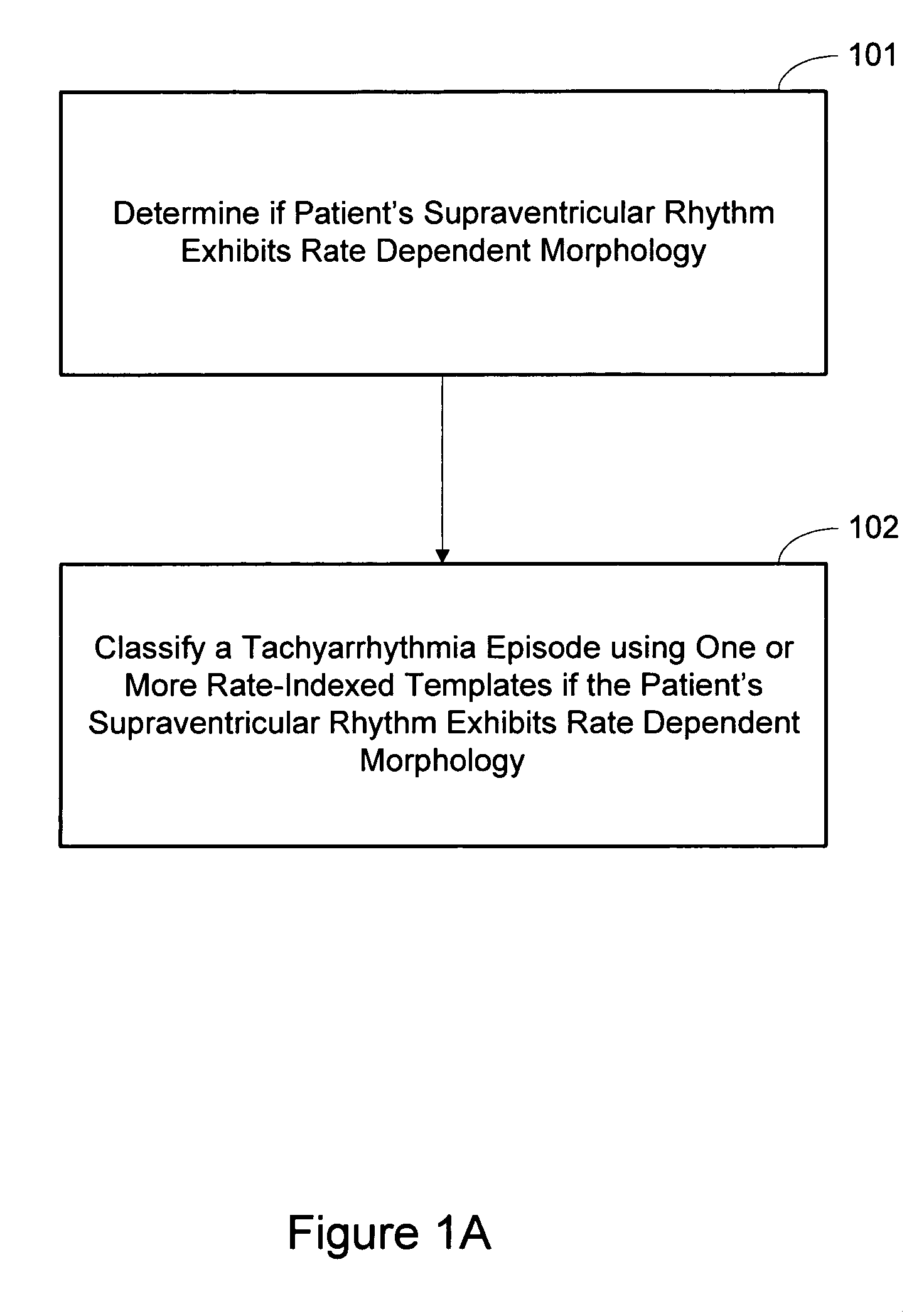Arrhythmia discrimination based on determination of rate dependency
a rate dependency and arrhythmia technology, applied in the field of arrhythmia discrimination based on the determination of rate dependency, can solve the problems of cardiac arrhythmias that can be life-threatening, cardiac arrhythmias that impair cardiac pumping efficiency, and heart rhythm described as arrhythmi
- Summary
- Abstract
- Description
- Claims
- Application Information
AI Technical Summary
Benefits of technology
Problems solved by technology
Method used
Image
Examples
Embodiment Construction
[0030]In the following description of the illustrated embodiments, references are made to the accompanying drawings forming a part hereof, and in which are shown by way of illustration, various embodiments by which the invention may be practiced. It is to be understood that other embodiments may be utilized, and structural and functional changes may be made without departing from the scope of the present invention.
[0031]Some current medical devices discriminate between supraventricular tachyarrhythmia (SVT) episodes and ventricular tachyarrhythmia (VT) episodes based on the morphology of the cardiac electrical signals produced during the episodes. The process involves detecting a cardiac electrical signal of ventricular beats during an episode of rapid heart rate. The cardiac electrical signal of the episode is compared to a normal sinus rhythm (NSR) template using an algorithm that determines a correspondence or similarity between the morphology of the episode and template morpholo...
PUM
 Login to View More
Login to View More Abstract
Description
Claims
Application Information
 Login to View More
Login to View More - R&D
- Intellectual Property
- Life Sciences
- Materials
- Tech Scout
- Unparalleled Data Quality
- Higher Quality Content
- 60% Fewer Hallucinations
Browse by: Latest US Patents, China's latest patents, Technical Efficacy Thesaurus, Application Domain, Technology Topic, Popular Technical Reports.
© 2025 PatSnap. All rights reserved.Legal|Privacy policy|Modern Slavery Act Transparency Statement|Sitemap|About US| Contact US: help@patsnap.com



